Four UNESCO World Heritage Sites of Kathmandu Sightseeing
Nestled within the heart of Kathmandu lies a tapestry of cultural treasures, each site a vibrant thread weaving together the history of Nepal. These UNESCO World Heritage Sites offer a glimpse into the soul of the city, where ancient traditions and architectural splendors intertwine.
Explore the allure of these revered locations, where stories of the past whisper through intricately carved temples and sacred stupas. As you embark on this journey through time, prepare to be mesmerized by the rich heritage that awaits at every turn.
Key Points
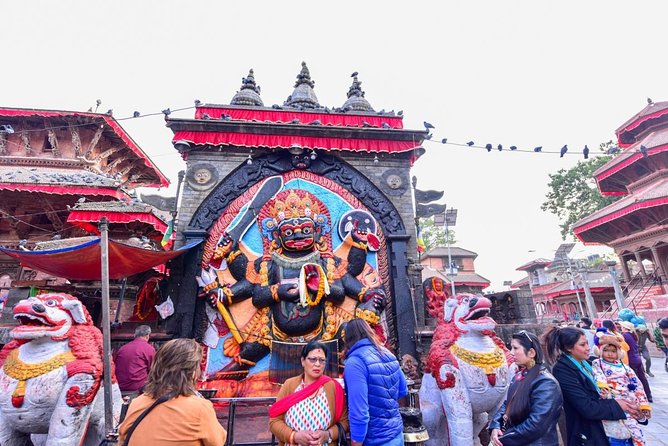
- Kathmandu boasts Swayambhunath, Pashupatinath, Boudhanath, and Kathmandu Durbar Square as UNESCO World Heritage Sites.
- These sites showcase rich cultural history, intricate architecture, and religious significance.
- Visitors can explore spiritual and artistic legacies through centuries-old structures and vibrant traditions.
- Kathmandu’s UNESCO sites offer a unique glimpse into the city’s past and its spiritual and artistic heritage.
Here's some more nearby activities we've reviewed
Background of Kathmandu’s UNESCO Sites
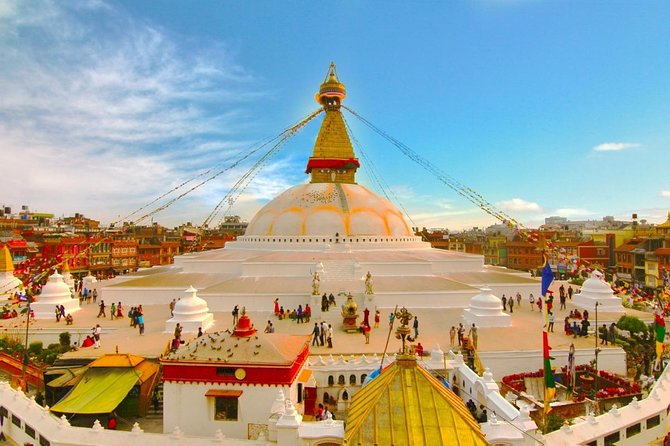
Nestled in the heart of the Kathmandu Valley lies a collection of UNESCO World Heritage Sites that showcase the rich cultural and historical tapestry of the region. Kathmandu’s heritage is a treasure trove of architectural wonders that captivate visitors from around the globe.
The ancient city is renowned for its intricate wood carvings, ornate palaces, and intricately designed temples that date back centuries. Each site, from the majestic Durbar Square to the sacred Pashupatinath Temple, tells a story of the city’s vibrant past and religious significance.
These UNESCO sites not only serve as a visual feast for the eyes but also offer a glimpse into the spiritual and artistic legacy that defines Kathmandu’s unique cultural identity.
Swayambhunath Stupa Overview
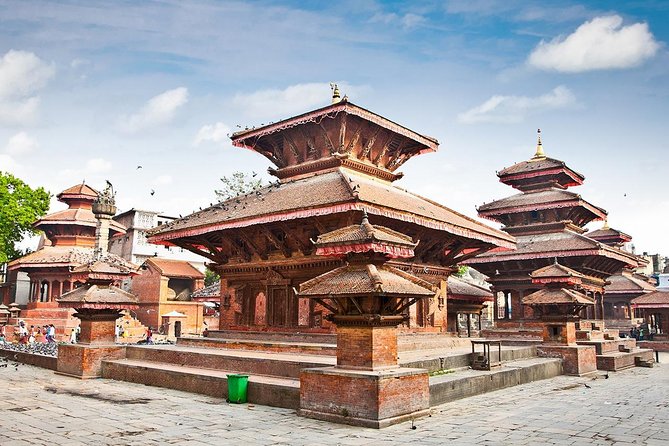
Kathmandu’s UNESCO World Heritage Sites form an integral part of the city’s cultural tapestry, and among these stands the iconic Swayambhunath Stupa, offering a profound glimpse into Nepal’s spiritual heritage.
-
Swayambhunath Renovation
- The stupa has undergone extensive renovation over the years to preserve its magnificence.
-
Stupa Architecture
- The architecture of Swayambhunath Stupa is a harmonious blend of Nepalese and Tibetan styles, adorned with intricate carvings and colorful prayer flags.
-
Spiritual Significance
- Swayambhunath isn’t just a monument; it’s a sacred pilgrimage site for Buddhists, attracting visitors seeking spiritual enlightenment and breathtaking views of Kathmandu Valley.
Pashupatinath Temple Details
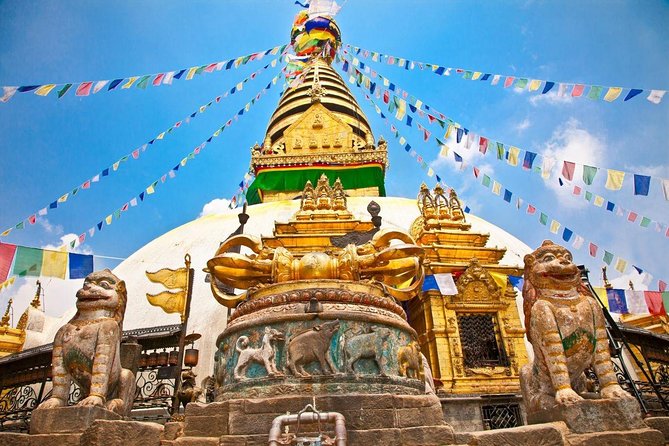
In the heart of the bustling city of Kathmandu lies the revered Pashupatinath Temple, a sacred Hindu site known for its rich cultural heritage and spiritual significance. The temple’s architecture showcases intricate wood carvings, pagoda-style roofs, and detailed stone masonry, reflecting traditional Nepalese craftsmanship. Hindu rituals such as cremation ceremonies along the Bagmati River, where the temple is located, are common practices here. Devotees and visitors can witness priests performing daily rituals and prayers, adding to the spiritual ambiance of the temple complex. The Pashupatinath Temple stands as a symbol of faith and devotion for Hindus worldwide.
| Pashupatinath Architecture | Hindu Rituals |
|---|---|
| Intricate Wood Carvings | Cremation Ceremonies |
| Pagoda-style Roofs | Daily Rituals and Prayers |
| Detailed Stone Masonry | Spiritual Ambiance |
Boudhanath Stupa History

With a history dating back over 1,500 years, the Boudhanath Stupa in Kathmandu stands as a monumental symbol of Tibetan Buddhism’s rich heritage and spiritual significance. The stupa’s architecture showcases traditional Nepali and Tibetan styles, with a massive mandala set in a dome structure.
The whitewashed dome is adorned with colorful prayer flags fluttering in the wind, representing peace and compassion. The all-seeing eyes of the Buddha gaze out from the four sides of the square tower topping the stupa, symbolizing wisdom and enlightenment.
The Boudhanath Stupa isn’t only a marvel of architectural design but also a deeply revered site for pilgrims and locals, reflecting its profound cultural significance.
Kathmandu Durbar Square Insights

Amidst the bustling streets of the city lies an ancient square that serves as a living testament to Kathmandu’s rich cultural history and architectural grandeur. Kathmandu Durbar Square, a UNESCO World Heritage Site, showcases a blend of Newar architecture and cultural heritage.
The square is home to palaces, courtyards, temples, and shrines, each narrating a story of the city’s royal past and religious significance. Visitors can marvel at the intricately carved wooden windows, doors, and struts that adorn the structures, reflecting the artistic mastery of the Newar craftsmen.
The Hanuman Dhoka Palace, Taleju Temple, and Kumari Bahal are among the prominent attractions within the square, offering a glimpse into the historical and spiritual essence of Kathmandu’s architectural legacy.
Changunarayan Temple Significance
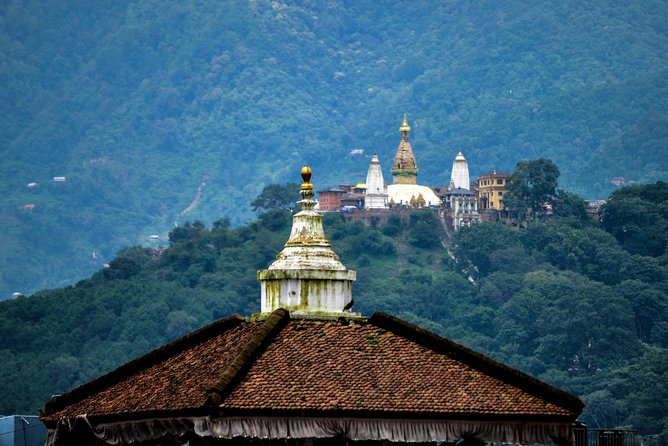
Nestled in the lush foothills of the Kathmandu Valley, the Changunarayan Temple stands as a revered symbol of Nepal’s ancient craftsmanship and religious devotion.
-
Architectural Marvels: The temple showcases intricate wood carvings, stone inscriptions, and detailed metalwork, reflecting the exceptional skills of ancient Nepali artisans.
-
Hindu Mythology: Changunarayan is dedicated to the Hindu god Vishnu, and its walls are adorned with depictions of various Hindu deities and mythological scenes, offering visitors a glimpse into the rich religious heritage of Nepal.
-
Historical Significance: Believed to be the oldest Hindu temple in the Kathmandu Valley, Changunarayan holds immense historical importance, attracting pilgrims and travelers alike to marvel at its beauty and spiritual aura.
UNESCO Sites Sightseeing Tips

Explore essential tips for visiting UNESCO World Heritage Sites in Kathmandu to make the most of your sightseeing experience.
When exploring these sites, consider practicing sustainable tourism by respecting the environment, avoiding littering, and supporting local businesses.
To contribute to cultural preservation, engage with the local community respectfully, follow guidelines set by the sites, and refrain from touching or damaging any artifacts or structures.
It’s important to be aware of the historical significance of each site and to educate yourself on their cultural importance.
Here's a few more nearby tours and experiences we have reviewed.
- Kathmandu: City Flavors Guided Walking Tour
- Spiritual Nepal: Expert Insight Into Hinduism and Buddhism
- Experience Luxury Travel: Pokhara to Kathmandu by Sofa Bus
- From Kathmandu: Nagarkot Panoramic Day Hike With Lunch
- Kathmandu: Private One Day Nagarkot Sunrise and Hiking Trip
- From Kathmandu: Nagarkot Tour Package 1 Nights 2 Days
Common questions

What Are the Best Transportation Options for Visiting These UNESCO World Heritage Sites in Kathmandu?
For visiting UNESCO World Heritage Sites in Kathmandu, travelers can explore using public transportation, private taxis, walking tours, or cycling routes. Each option offers a unique way to experience the rich cultural and historical sites.
Are There Any Recommended Local Restaurants or Eateries Near These Sites for a Quick Meal or Snack?
Near the UNESCO World Heritage Sites in Kathmandu, visitors can savor local cuisine at charming eateries and food stalls. From culinary delights to street vendors, the area offers a range of delicious options for a quick meal or snack.
Are There Any Specific Guidelines or Rules Visitors Should Be Aware of Before Entering These Cultural Sites?
Visitors should respect cultural etiquette and adhere to entry requirements at these heritage sites. Dress modestly and be mindful of photography restrictions. Understanding and following these guidelines will ensure a respectful and enjoyable experience.
Are There Any Lesser-Known Facts or Myths Associated With These UNESCO World Heritage Sites in Kathmandu?
When exploring Kathmandu’s UNESCO World Heritage Sites, visitors may uncover intriguing myths, lesser-known facts, and historical mysteries. These cultural landmarks are steeped in traditional beliefs, local legends, and immense cultural significance.
Are There Any Nearby Accommodation Options or Hotels That Offer a Convenient Stay for Tourists Visiting These Sites?
Nearby accommodations offer convenient stays for travelers exploring the UNESCO World Heritage Sites in Kathmandu. Tourist transportation is easily accessible, and local eateries provide a taste of Nepali cuisine. Enjoy a seamless experience while immersing in cultural wonders.
Here's more of our most recent tour reviews happening neaby
- Hindu Holy Tour
- Chitlang Markhu Guided Hiking and Overnight Tour
- Cultural Tour Arouind Kathmandu With Authentic Nepali Lunch
- Kathmandu-Chisapani – Nagarkot Trek 3 Days
- Nagarkot Dhulikhel Day Hiking
- Half Day Shivapuri Bird Watching Tour
- Kathmandu Valley Full Day Tour
- Upper Mustang Trekking
- 5 Days Chisapani Nagarkot Trek (Family Trekking)
- From Kathmandu: Delhi & Taj Mahal Trip
- Changunarayan Nagarkot Day Hiking Tour From Kathmandu
Last Words
Set out on a journey through the ancient city of Kathmandu and explore its four UNESCO World Heritage Sites, each offering a unique glimpse into Nepal’s vibrant heritage.
From the serene Swayambhunath Stupa to the intricate woodwork of Kathmandu Durbar Square, these iconic landmarks showcase the rich cultural tapestry of the capital city.
Enjoy the enchanting beauty and historical significance of these sites, and discover the magic that has captivated visitors for centuries.